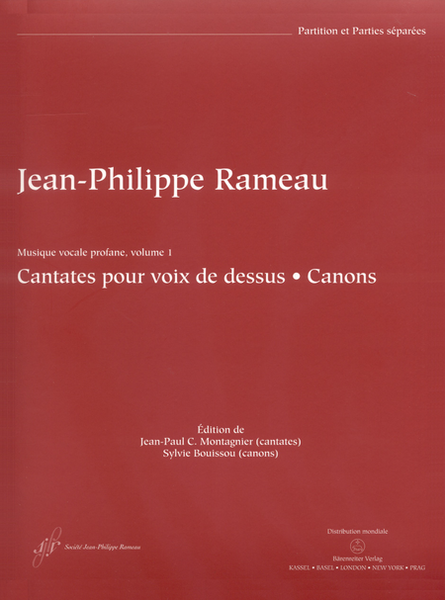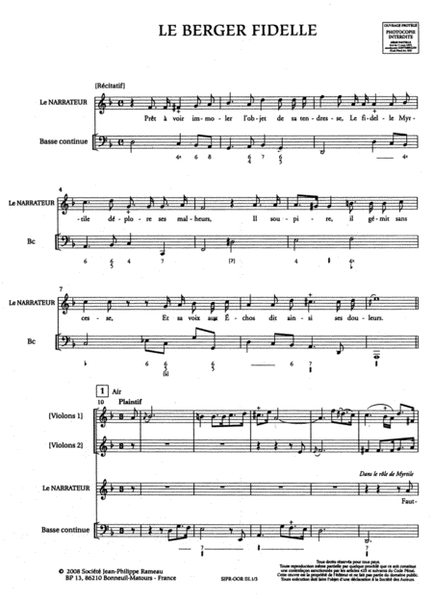Cantates pour voix de dessus
Canons
-
Ships in 1 to 2 weeks
Details
Description
SKU: BA.BA08946
Canons. Composed by Jean-Philippe Rameau. Edited by Jean-Paul C. Montagnier and Sylvie Bouissou. This edition: urtext edition. Paperback. Musique vocale profane, volume 1. Score, Set of parts, anthology. 110/33/3/24/8/48 pages pages. Baerenreiter Verlag #BA08946. Published by Baerenreiter Verlag (BA.BA08946).ISBN 9790006538126. 33.4 x 24.2 cm inches.
At the time when Jean-Philippe Rameau was interested in the form of the cantata, the French form of the genre tended to concentrate on mythological, pastoral or allegorical themes. As a highly popular genre, the cantatas were performed by amateurs and professional musicians in concerts, private performances and on special occasions.
However, in his cantatas, Rameau tried out his dramatic gifts by creating “mini operas”. Until now, only two of the seven surviving cantatas have been available – “ Le Berger fidell e and Aquilon et Orithie ” ; this edition is therefore sure to guarantee great discoveries.
Even though the genre of the canon played a minor role in Rameau’s output, he nevertheless made some important contributions. The daring modulations in all their tonalities demonstrate how the contrapuntal dimension fascinated the composer. The four individual surviving airs were probably written as occasional pieces.
BA 8946 (Vol. 1) and BA 8948 (Vol. 2) are based on the volume published as part of the “ Opera Omnia Rameau” , srie III, volume I, “ Cantates , Canons, Airs” (BA 8855) and contain the following work numbers: RCT 22-28 (Cantatas), RCT 17-20 bis (Canons) and RCT 21 1 -21 4 (Airs). They are published in a folder each containing score and parts.
In addition to a continuo accompaniment, five of the cantatas require two “ obbligato dessus ” (high obbligato instrumental parts). The choice of instruments (violin and/or flute and/or oboe) is free and furthermore, the scoring can be several instruments to a part.
“L’Impatience , Les Amants trahis ” and “ Orphe ” are intended to have a bass viol whose function changes between a concertato and a continuo instrument. In a chamber music context, the (figured) continuo part is simply played by bass stringed instruments.
About Barenreiter Urtext
What can I expect from a Barenreiter Urtext edition?
MUSICOLOGICALLY SOUND
- A reliable musical text based on all available sources
- A description of the sources
- Information on the genesis and history of the work
- Valuable notes on performance practice
- Includes an introduction with critical commentary explaining source discrepancies and editorial decisions
... AND PRACTICAL
- Page-turns, fold-out pages, and cues where you need them
- A well-presented layout and a user-friendly format
- Excellent print quality
- Superior paper and binding


 Share
Share